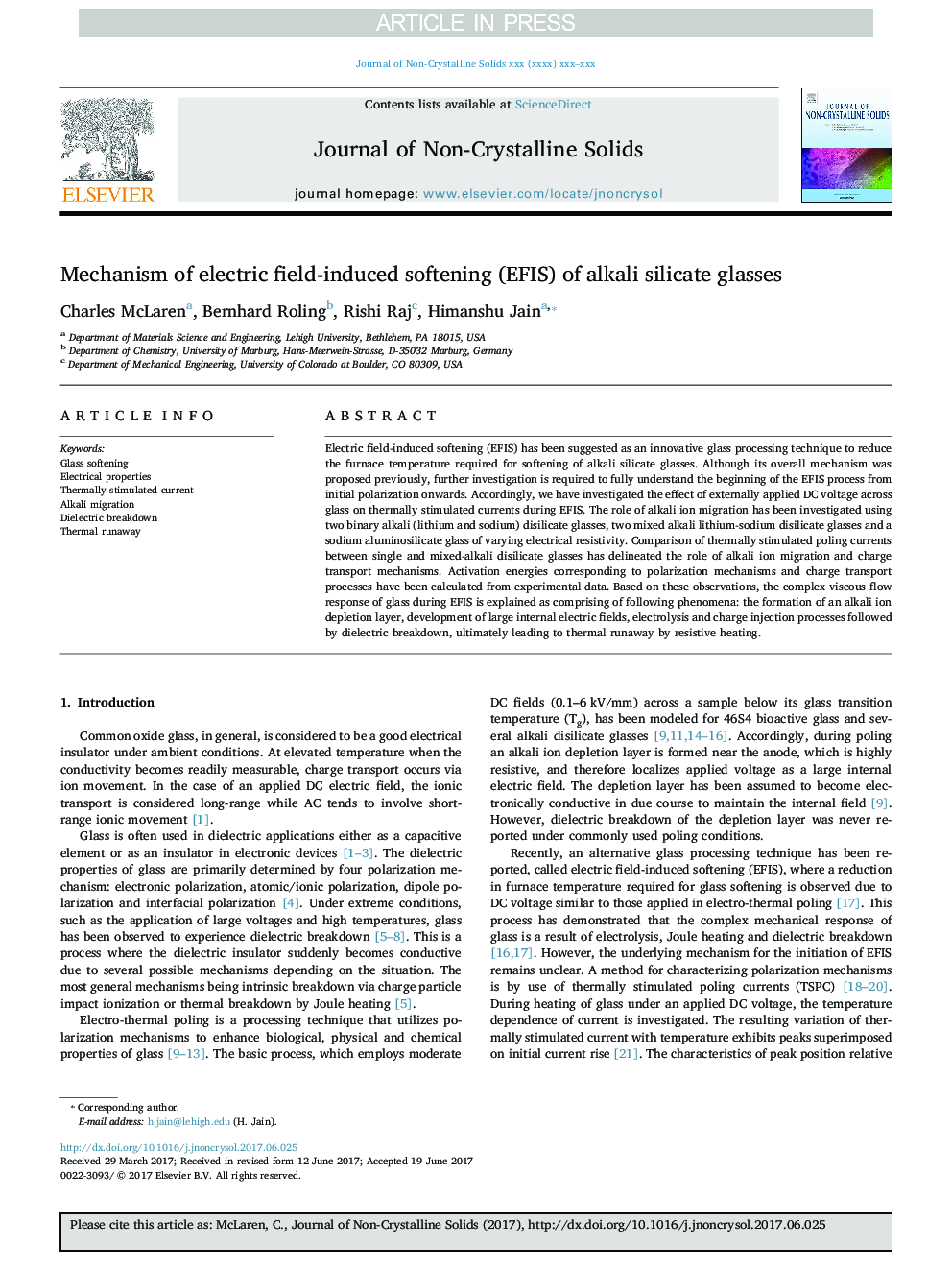| Article ID | Journal | Published Year | Pages | File Type |
|---|---|---|---|---|
| 5441105 | Journal of Non-Crystalline Solids | 2017 | 12 Pages |
Abstract
Electric field-induced softening (EFIS) has been suggested as an innovative glass processing technique to reduce the furnace temperature required for softening of alkali silicate glasses. Although its overall mechanism was proposed previously, further investigation is required to fully understand the beginning of the EFIS process from initial polarization onwards. Accordingly, we have investigated the effect of externally applied DC voltage across glass on thermally stimulated currents during EFIS. The role of alkali ion migration has been investigated using two binary alkali (lithium and sodium) disilicate glasses, two mixed alkali lithium-sodium disilicate glasses and a sodium aluminosilicate glass of varying electrical resistivity. Comparison of thermally stimulated poling currents between single and mixed-alkali disilicate glasses has delineated the role of alkali ion migration and charge transport mechanisms. Activation energies corresponding to polarization mechanisms and charge transport processes have been calculated from experimental data. Based on these observations, the complex viscous flow response of glass during EFIS is explained as comprising of following phenomena: the formation of an alkali ion depletion layer, development of large internal electric fields, electrolysis and charge injection processes followed by dielectric breakdown, ultimately leading to thermal runaway by resistive heating.
Related Topics
Physical Sciences and Engineering
Materials Science
Ceramics and Composites
Authors
Charles McLaren, Bernhard Roling, Rishi Raj, Himanshu Jain,
